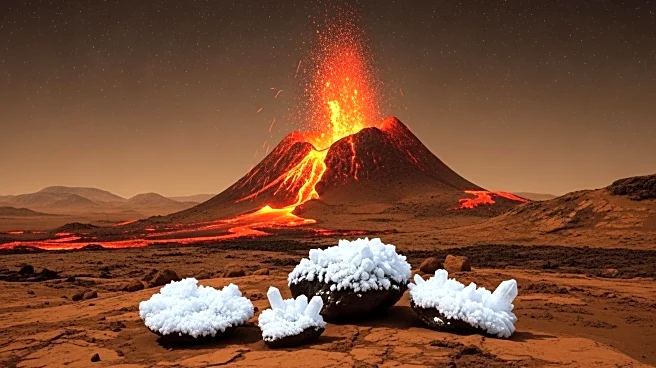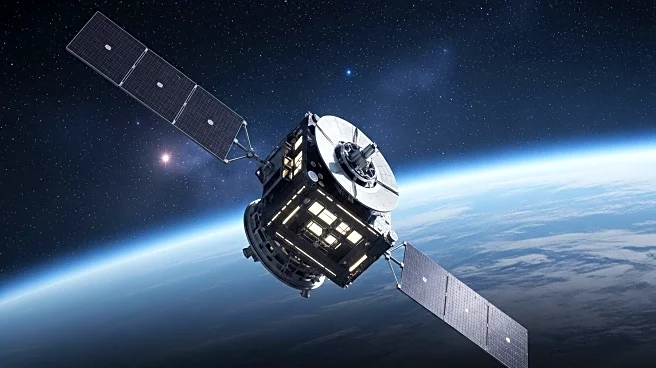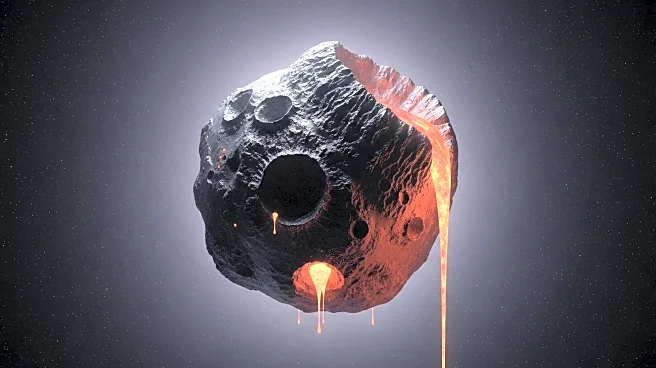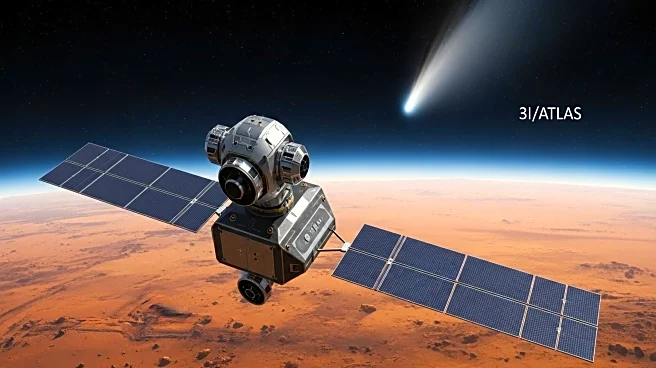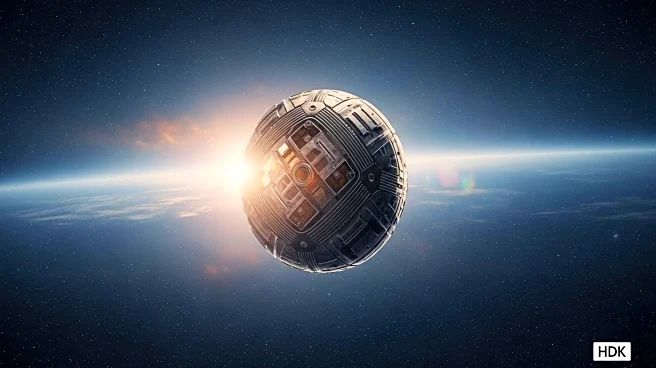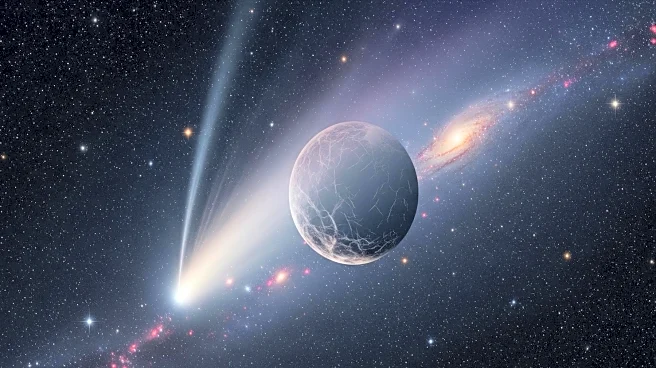What's Happening?
Research indicates that ancient volcanic eruptions on Mars may have transported ice to the planet's equatorial regions. These eruptions, occurring billions of years ago, could have blasted water from Mars' interior into the atmosphere, where it froze and snowed down to form thick ice layers. This phenomenon is attributed to Mars' lower gravity, which allowed volcanic plumes to reach significant heights. The presence of ice in the equatorial regions is unexpected, as these are the warmest parts of the planet.
Why It's Important?
Understanding the distribution of ice on Mars is crucial for future crewed missions, as it could provide a vital resource for astronauts. The findings challenge previous assumptions about Mars' climate history and the processes that shaped its surface. This research could influence the planning of landing sites for future missions, prioritizing areas with accessible ice deposits. It also contributes to the broader understanding of Mars' geological and atmospheric evolution.
What's Next?
Further studies may focus on confirming the presence and extent of equatorial ice through advanced radar and imaging techniques. Researchers may also explore the implications of volcanic activity on Mars' climate and its potential role in shaping the planet's surface features. These investigations could provide insights into the planet's past and guide future exploration efforts.
Beyond the Headlines
The study of Martian ice distribution highlights the complex interplay between volcanic activity and climate. It suggests that Mars' geological history is more dynamic than previously thought, with implications for understanding planetary processes in general.


